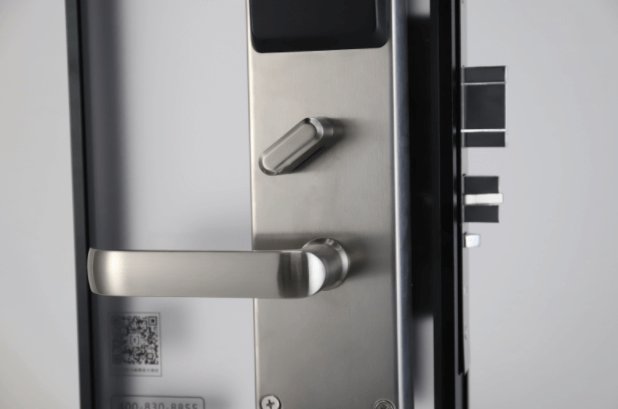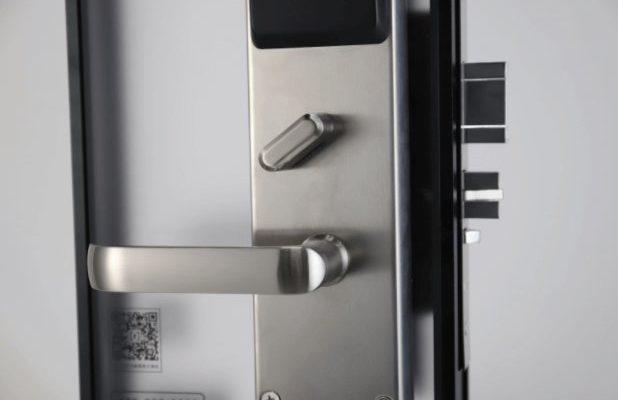
Here’s the thing: Smart locks are supposed to make life easier and safer. But when they start acting up, it doesn’t just mess with your peace of mind; it creates a real security risk. Whether you’re using a keypad, an app, or even a key fob remote to control your lock, figuring out why it’s opening on its own can feel like chasing a ghost. Let’s break down why this happens and how you can finally get your lock back under control—one clear, beginner-friendly step at a time.
Why Does My Smart Lock Unlock by Itself?
If your smart lock is unlocking randomly, it’s easy to jump to the worst-case scenario—hacker, burglar, or faulty device. But honestly, most of the time, the cause is a lot less dramatic. Modern locks are pretty complex: there’s firmware, wireless connections, batteries, remote codes, and even integration with other smart home systems. Any little problem along that chain can trigger a *surprise* unlock.
Here are some of the most common culprits:
- Auto-unlock features (using your phone’s GPS or Bluetooth to detect when you’re near)
- App or remote glitches (like a stuck button or a “ghost touch” from a cracked screen)
- Interference or sync issues with your Wi-Fi, Bluetooth, or Zigbee/Z-Wave hub
- Outdated firmware or buggy software from the manufacturer
- Multiple users or shared codes—maybe someone else is unlocking it
Let me explain: If you’ve paired your lock with a universal remote, or set it up with friends or family, it’s possible someone else is accidentally unlocking it from afar. Or, the auto-unlock might be *too* sensitive, detecting your phone even from inside the house. Either way, the troubleshooting steps below will help you zero in on the real problem.
Checking for Auto-Unlock and App Settings
First things first: dive into your lock’s app settings. Most smart locks—like August, Schlage Encode, Yale Assure, and others—come with an auto-unlock feature designed to open the door when you approach with your phone. Pretty handy, unless it starts firing when you’re nowhere near the door.
Here’s how to check:
- Open your lock’s mobile app (e.g. Yale Access, August Home, or Schlage Home).
- Go to the Settings or Device menu.
- Look for Auto-Unlock, Proximity Unlock, or similar options.
- Disable auto-unlock and save your changes.
Give it a day or two after turning this off. If the random unlocks stop, you’ve found your culprit. If not, keep reading—sometimes these features get confused by things like GPS drift or Bluetooth overlap from other family members’ phones. You can also check if any third-party automations (Google Home, Alexa, IFTTT) are set to unlock at odd times.
Battery and Power Problems
You might be wondering, “What does the battery have to do with this?” Here’s the thing: Low or failing batteries are notorious for causing weird behavior in smart devices. When your lock doesn’t get enough juice, it might misfire—unlocking, locking, or just freezing up entirely.
Steps to check:
- Remove the battery cover and check the charge indicator, if there is one.
- If you’ve had the same batteries for more than six months, swap them out for fresh, name-brand batteries. (Don’t mix old and new or different brands.)
- After changing the batteries, reset or re-sync your lock using the app or the lock’s on-device button if prompted.
Sometimes, locks store a small bit of “unlock” memory or queue up commands when the battery is almost dead. Replacing the battery and resetting can flush out these leftover commands. Remember, rechargeable batteries can sometimes be unreliable with smart locks—stick to standard alkaline or the battery type your manufacturer recommends.
A smart lock with a dying battery can act like a sleep-deprived robot: weird, unpredictable, and unreliable.
Wireless Interference and Connection Issues
Wi-Fi, Bluetooth, and Zigbee all have their quirks. If your smart lock needs to sync with a hub or connect to your home Wi-Fi, connection issues can lead to unpredictable unlocking—or prevent your lock from updating its status in the app.
Here’s what to check:
- Distance from router or hub: Try moving your Wi-Fi router closer, or repositioning any Zigbee/Z-Wave hubs.
- Update your router firmware and restart all network devices. Sometimes, a simple reset does wonders.
- Check for new wireless devices nearby. Baby monitors, microwaves, or other smart gadgets can cause interference.
- Manually re-sync your lock with the app or hub—follow the pairing instructions in your manual or the app.
If you’re using a universal remote or key fob, try removing its battery for a few hours to see if the random unlocking stops. Sometimes, a stuck button or faulty fob will keep sending the “unlock” code to your smart lock.
Firmware and App Updates: Don’t Skip Them
Software updates aren’t just about adding new features—they squash bugs that can cause exactly these kinds of problems. If your lock’s code is old, it might misinterpret signals or get stuck in a loop, triggering random unlocking events.
To update:
- Open your lock’s app and check for firmware updates for your device.
- Install any pending updates—even if the version notes seem minor.
- Update the app itself from your device’s app store.
- Restart your phone and, if possible, the lock too (usually by removing/reinserting the batteries).
Manufacturers like Yale, August, and Schlage all push updates to fix security holes, sync issues, and remote pairing bugs. After updating, give your lock a day to see if the unlock problem comes back. If it does, you might want to dig into recent app permissions—sometimes updates reset them and let third-party apps unlock your door.
User Accounts, Codes, and Shared Access
Smart locks often let you share access with family, roommates, or contractors. If someone else has the app, a paired remote, or a PIN code, they could be unlocking the door—on purpose or by mistake. Maybe they tapped the remote, or maybe their phone is set to auto-unlock when they drive by.
Here’s what to do:
- Review the user list in your lock’s app. Remove anyone who shouldn’t have access.
- Change all PIN codes to something new, and re-issue them to trusted users only.
- Unpair or reset any remotes that might have been lost, damaged, or given away.
- If your lock supports activity logs, check the history—see if there’s a pattern to when it unlocks.
Sometimes, people forget they shared access with a dog-walker or neighbor months ago. A good cleanup of users and codes can stop a lot of weird unlocking surprises.
Double-check who’s got digital “keys”—it’s easy to lose track when everyone wants easy access.
Resetting and Re-Pairing Your Smart Lock
If you’ve tried everything and your lock still has a mind of its own, it might be time for the “big reset.” Most locks let you perform a factory reset, wiping all settings, users, codes, and remote connections. It’s a pain to set back up, but sometimes it’s the only way to fully clear up syncing issues or buggy code.
How to reset (general steps—check your manual for details):
- Remove the inside cover to access the reset button (it’s usually tiny—use a paperclip).
- Hold the reset button for 10–30 seconds until the lock chirps, flashes, or beeps.
- Reinstall batteries if needed, then open the app to start fresh.
- Pair the lock with your phone, Wi-Fi, or hub again. Set up user codes and remotes from scratch.
This process flushes out stray codes, broken syncs, or corrupted memory. If you use a universal remote, re-pair it only after you’re sure the lock is behaving normally. If your lock keeps unlocking randomly even after a reset, it could be a hardware fault—reach out to the manufacturer for support or a possible replacement.
When to Call Tech Support or Replace Your Lock
Honestly, if you’ve run through all these troubleshooting tips and your lock still unlocks by itself, it’s time to wave the white flag. Electronics are complex, and sometimes the internal circuitry just wears out or gets damaged. Maybe water snuck inside, or there’s a bug the manufacturer hasn’t fixed yet.
Signs you need pro help:
- You see error codes or blinking lights you can’t reset.
- The lock unlocks even after a factory reset and fresh battery.
- There’s no rhyme or reason to the unlocking, and no pattern in the activity log.
Don’t be shy about reaching out to Yale, August, or Schlage support. They may have new firmware, or offer to replace your lock if it’s still under warranty. If your lock is old or unsupported, upgrading to a newer model might be safer and less stressful in the long run.
Staying Secure While You Troubleshoot
Here’s a quick reality check: while you’re figuring out why your smart lock is unlocking randomly, don’t forget about basic home security. Consider:
- Temporarily switching to using a traditional key, if possible
- Adding a secondary manual deadbolt or security bar
- Alerting family members or roommates about the issue, so they stay vigilant
- Setting up camera or activity alerts on the app, if your system supports it
No smart lock should make you feel less safe in your own home. Take a little extra caution while you’re troubleshooting, and you’ll sleep easier.
Remember, a smart lock is only as secure as its settings, codes, and the people who control it—plus a little help from fresh batteries.
Closing thoughts: Troubleshooting a smart lock that’s unlocking randomly isn’t fun—but it *is* doable. Often, it’s just a case of a weird app setting, old batteries, or a forgotten user code. Take it one step at a time, don’t skip the boring stuff (like firmware updates), and don’t wait too long to ask for help if things stay weird. Peace of mind is worth a little patience and persistence.
